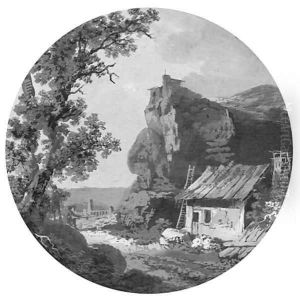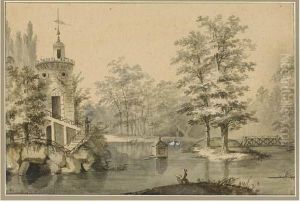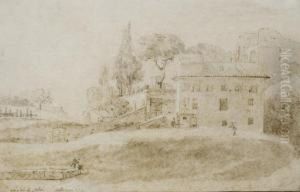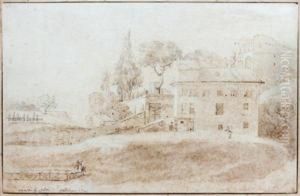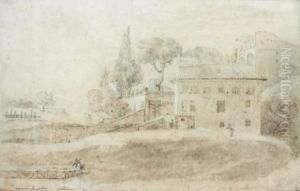Claude-Henri Watelet Paintings
Claude-Henri Watelet was a multifaceted figure in the French Enlightenment, not only an artist but also an engraver, writer, poet, and economist. He was born on August 28, 1718, in Paris, France. Coming from a wealthy background, Watelet had the means to pursue his varied interests, particularly in the arts and letters. He was not formally educated as an artist but developed his skills in engraving and nurtured a deep appreciation for the landscape garden design which influenced his work and ideas.
Watelet's contributions to the arts were broad. As an engraver, he was known for his reproductions of famous paintings, which helped disseminate contemporary and classical artworks to a wider audience. However, it was his theoretical work on aesthetics and his practical engagement with landscape gardening for which he is perhaps best remembered. His most significant written work, 'Essai sur les jardins' (Essay on Gardens), published in 1774, is a poetic treatise on garden design, reflecting the ideals of harmony with nature that were becoming prominent in the 18th century.
In addition to his writings on gardens, Watelet also penned a dictionary on the fine arts titled 'Dictionnaire des Arts de Peinture, Sculpture et Gravure,' published posthumously in 1792. This was an ambitious project that aimed to compile and synthesize knowledge on the visual arts and remains a valuable historical document on 18th-century art theory and criticism.
Watelet was also known for his patronage of the arts and his association with many influential figures of his time, including artists, writers, and intellectuals. He was a member of several important societies, including the Académie Royale de Peinture et de Sculpture and the Académie des Inscriptions et Belles-Lettres. His home and gardens at Moulin Joli on the banks of the Seine became a salon for the intellectual elite, where ideas on art and philosophy were freely exchanged.
Claude-Henri Watelet died on January 12, 1786, in Paris. Though he may not be as widely recognized today as some of his contemporaries, his work and ideas had a notable impact on the art and culture of his time, and he remains a significant figure for historians studying the Enlightenment and the development of aesthetic theory and garden design.
